Action Analysis &Animation Artifacts &Articles on Animation &Disney 09 Jun 2011 07:14 am
Action Analysis – March 15, 1937
- Here is yet more of the Action Analysis class notes transcribed at the Disney studio in this lesson wherein they study clips from several films including a Laurel & Hardy short and a Charlie Chaplin short. If you can get your hands on either (Netflix might have them) it’ll help you to understand the talk.
Participants include: Teacher, Don Graham, animators, Izzy Klein, Joe Magro, either Jacques or Bill Roberts and Stan Quackenbush, storyman Chuck Couch, and BG artist, Dick Anthony.
The complete body of these notes really works as a masterclass in animation for those who are interested and take the time to read them.
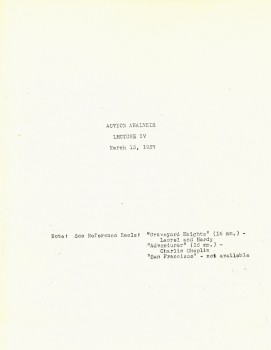
Cover
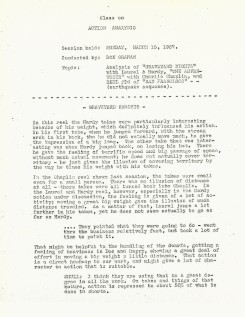
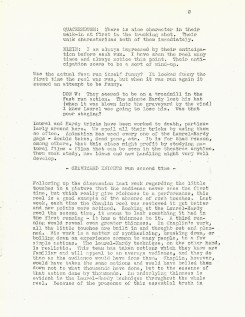
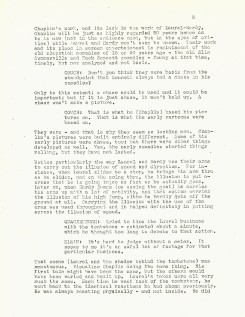
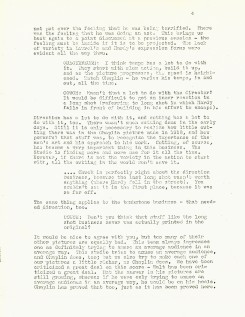
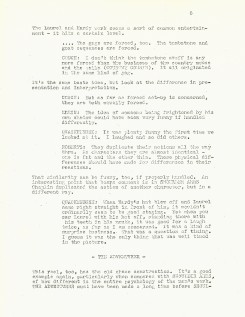
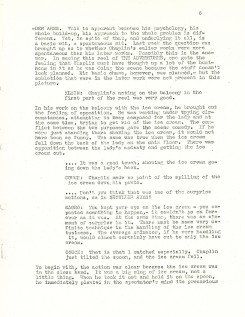
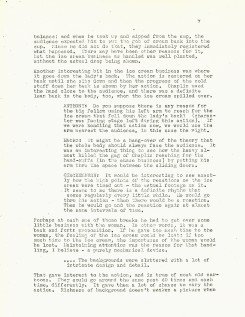
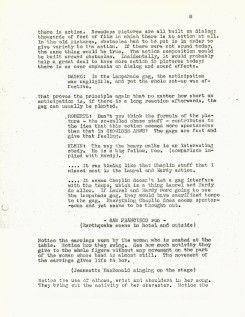
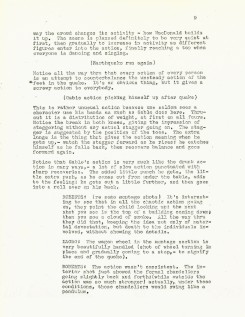
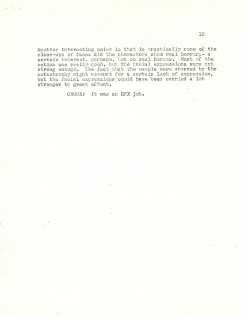

on 09 Jun 2011 at 10:53 am 1.The Gee said …
Even without having watched the scenes they were discussing, that’s pretty impressive to read.
There’s a couple of things, like the bit about too much dialogue, that could be contemporary comments. Then there’s the fact that they refer to “old” movies while discussing the routines.
Thanks.
I did a quick search to see if something may be online for viewing. A lot of Chaplin’s early stuff is available, including this
http://www.archive.org/details/CC_1917_10_22_TheAdventurer
on 09 Jun 2011 at 3:33 pm 2.David said …
Hi Michael,
Today I viewed the last 88 pages of your blog!
I had I great time! I follow your splog from now on!
Thanks!
on 09 Jun 2011 at 5:34 pm 3.Mark Sonntag said …
Sounds like they are refering to L & H’s short Habeas Corpus.
on 10 Jun 2011 at 12:01 pm 4.Tom Minton said …
They were so certain in 1937 that Chaplin would be remembered fifty years down the line and that Laurel and Hardy would not. No one foresaw that Keaton’s films would be championed over both because as time went on they played as more contemporary and less maudlin. The most interesting psychology in these notes is how the studio moderator uses every manipulative trick to keep control, leading without permitting any thought or discovery not in keeping with the company line. It was stated early on that Chaplin was far superior to Laurel and Hardy and nobody dared challenge that point, only embellish. The action analysis theories remain compelling and a must-read for anyone who thinks they’d like to be an animator because it seems like it would be fun.
on 11 Jun 2011 at 12:09 am 5.The Gee said …
I’m just theorizing with this but a couple of things about what you mention about Chaplin and how they put him on a pedestal.
One, on page four, it explicitly states that “The Studio” wanted to make its pictures “little richer” like Chaplin’s were. It contrasts what L and H did as “average” but which appealed to audiences anyway. So, I’m guessing it was part of the way that Disney wanted to constantly improve. That period was one where it pushed the envelope.
Two, Chaplin was someone to emulate. From a business perspective, he was quite successful and was a primary founder of United Artists. Surely, that impressed Walt a lot. And, since the Micky Mouse character was compared to Chaplin and that might boost the ego a bit, Walt may have wanted to run on a parallel track with Chaplin himself, as a businessman who had a successful studio.
Finally, United Artists was distributing the Disney shorts during that time. So, the two studios were already partners and I wonder if that mattered most of all.
I’m no Disney-fan by any means nor even an amateur historian on that studio. I like the early shorts and the later featurettes and that’s about it. So, the above theorizing should be taken with a grain of salt and a shot of whiskey.
on 11 Jun 2011 at 12:16 am 6.The Gee said …
Obviously, I’m no Disney purist as I mis-spelled the name of its biggest star. ha ha.
And, I do very much agree with Tom Minton that those theories, notes from Don Graham’s classes and all that goes with that program at the studio are really good to know. The Stanchfield notes are great, too. I can’t say enough great things about those notes.
Being creative is one thing but being able to think critically to make everything as effective as possible is extremely important.